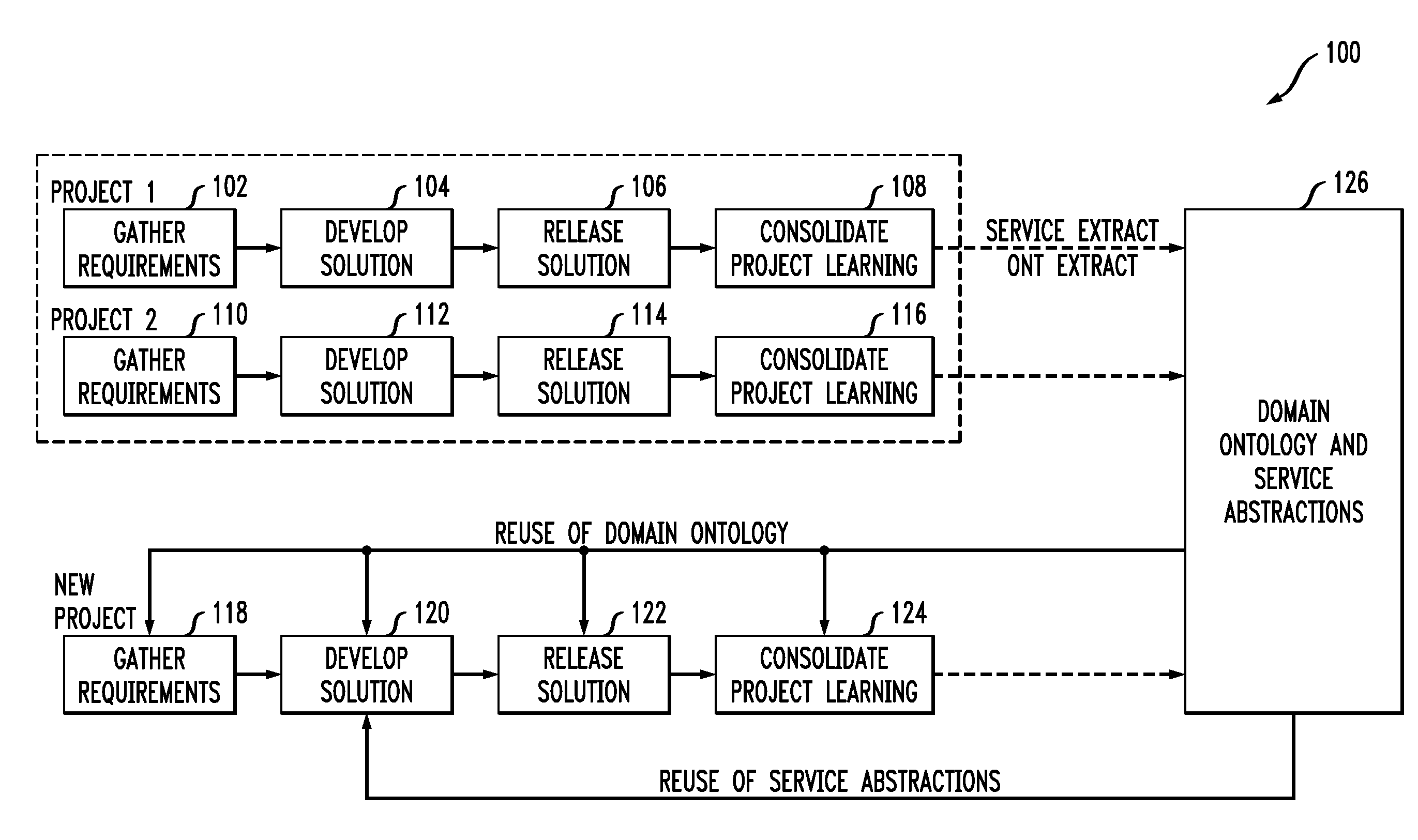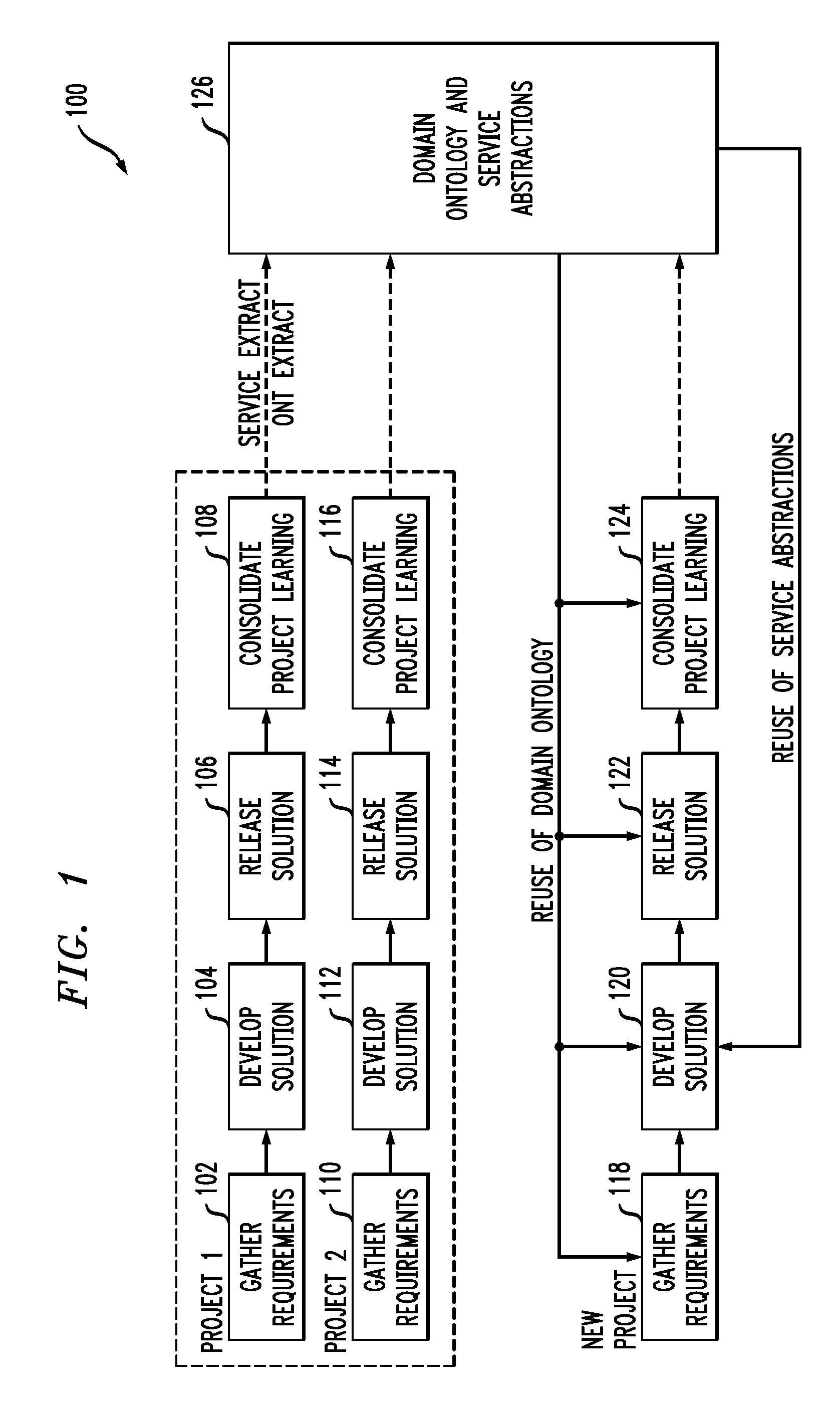Generating functional artifacts from low level design diagrams
a technology of functional artifacts and design diagrams, applied in the field of software development, can solve the problems of software reuse, less margins, and lower quality, and achieve the effect of reducing the cost of software development, reducing the cost of development, and improving the quality of the work
- Summary
- Abstract
- Description
- Claims
- Application Information
AI Technical Summary
Benefits of technology
Problems solved by technology
Method used
Image
Examples
example domain
[0045]Purely by way of example and not limitation, a case study of student course registration taken from the Rational tutorial will be employed as the running example in the exemplary embodiment. See Rational Software Corporation website, http: / / www.ibm.com / developerworks / . In this non-limiting example:
[0046](a) Each semester, students may request a course catalogue containing a list of course offerings for the semester.
[0047](b) The new on-line registration system will allow students to select four course offerings and two alternative choices for the coming semester.
[0048](c) No course offering will have more than ten students and less than three students.
[0049](d) Billing is done for each student for the courses registered.
[0050](e) Professors must be able update their course offerings and see which students signed up.
[0051]For the purpose of experimentation and evaluation, in this application, several solutions for the above problem are illustrated. FIG. 2 gives the UML class ...
PUM
 Login to View More
Login to View More Abstract
Description
Claims
Application Information
 Login to View More
Login to View More - R&D
- Intellectual Property
- Life Sciences
- Materials
- Tech Scout
- Unparalleled Data Quality
- Higher Quality Content
- 60% Fewer Hallucinations
Browse by: Latest US Patents, China's latest patents, Technical Efficacy Thesaurus, Application Domain, Technology Topic, Popular Technical Reports.
© 2025 PatSnap. All rights reserved.Legal|Privacy policy|Modern Slavery Act Transparency Statement|Sitemap|About US| Contact US: help@patsnap.com



